In the system shown in fig., mA=4m, mB=3m, and mc=8m. Friction is absent everywhere. String is inextensible and light. If the system is released from rest, then

Acceleration of block C is
1/4ms−2
2/7ms−2
5/4ms−2
1/3ms−2
The correct Answer is:C
Let acceleration of block C be a1 (rightwards) and acceleration of block B be a2 (lefwards).
Then acceleration of A will be (a1+a2) downwards and a1 rightwards.
Free body diagram of A is shown in fig.
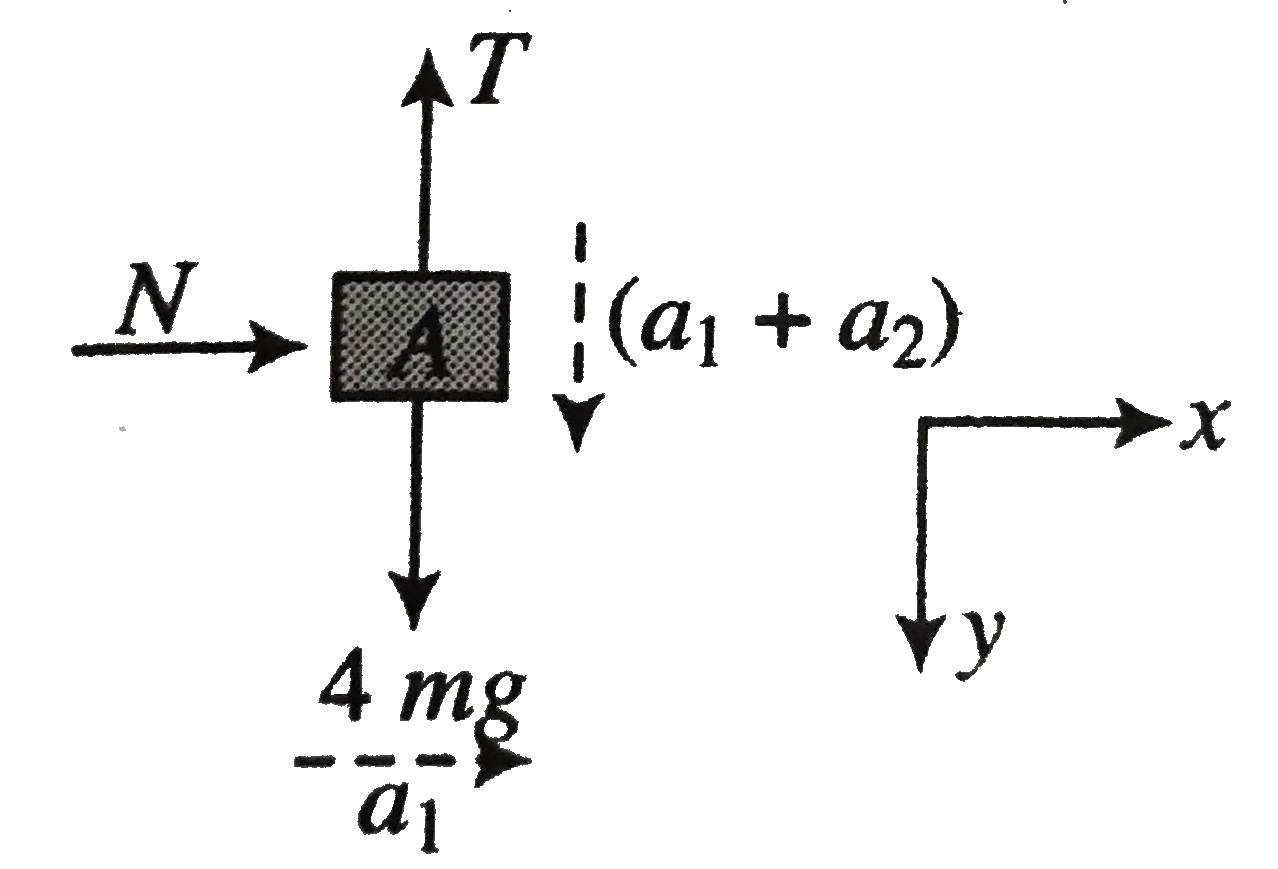
Using ΣFx=max and ΣFy=may, we get
N=4m(a1) ..(i)
and 4mg−T=4m(a1+a2) ..(ii)
Free bocy diagram of B (showing horizontal force only) is shown in the figure.
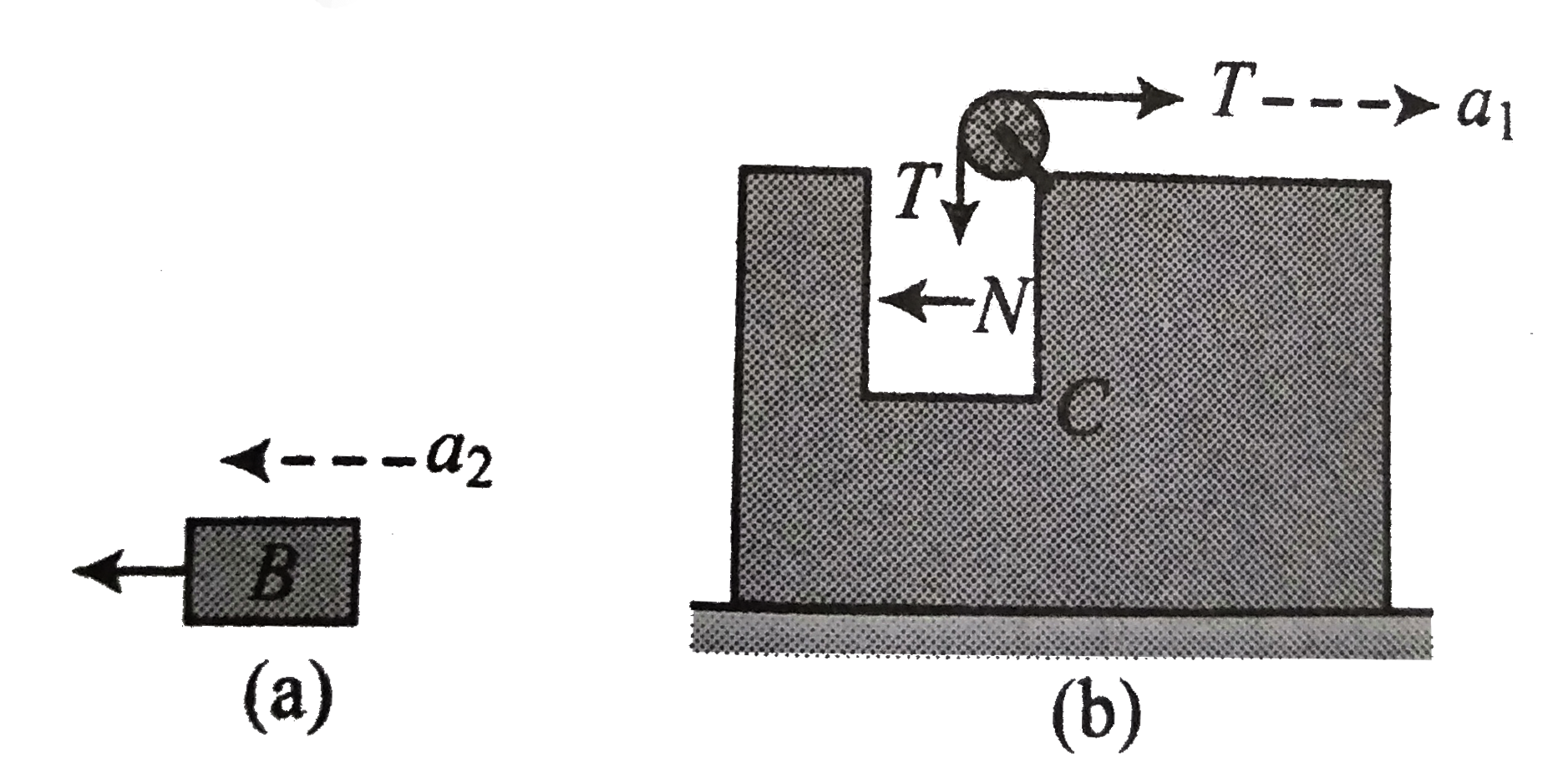
Using ΣFx=max, we get
T=3ma2 ...(iii)
Free body diagram of C (showing horizontal force only) is shown in fig.
Using ΣFx=max, we get
T−N=8ma1...(iv)
We have four unknowns T,N,a1, and a2. solving these four equations, we get
a1=g8 and a2=g2, a1+a2=58g
Thus, acceleration of A is g/8 in horizontal direction and 5g/8 in vertical direction.
Acceleration of B is g/2 in horizontal direction (leftwards) and acceleration of C is g//8 in horizontal direction (rightwards).
Topper's Solved these Questions
- NEWTON'S LAWS OF MOTION 1BOOK - CENGAGE PHYSICSCHAPTER - NEWTON'S LAWS OF MOTION 1EXERCISE - Integer
5 Videos
- NEWTON'S LAWS OF MOTION 1BOOK - CENGAGE PHYSICSCHAPTER - NEWTON'S LAWS OF MOTION 1EXERCISE - Assertion-reasoning
15 Videos
- MISCELLANEOUS VOLUME 2BOOK - CENGAGE PHYSICSCHAPTER - MISCELLANEOUS VOLUME 2EXERCISE - INTEGER_TYPE
10 Videos
- NEWTON'S LAWS OF MOTION 2BOOK - CENGAGE PHYSICSCHAPTER - NEWTON'S LAWS OF MOTION 2EXERCISE - Integer type
1 Videos
Similar Questions
In the system shown in fig., all pulleys are mass less and the string is inextensible and light.
(a) After the system is released, find the acceleration of mass m1
(b) If m1=1kg,m2=2kgandm3=3kg then what must be value of mass m4 so that it accelerates downwards?
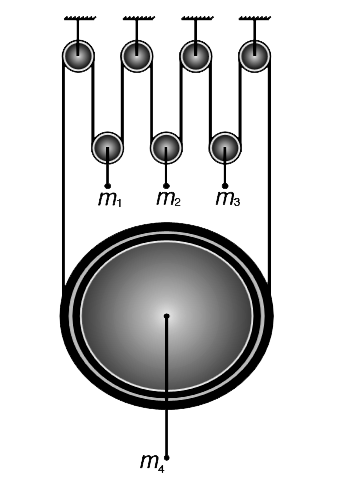
View SolutionFigure-2.54 shows a block of mass m is placed on an inclined wedge of mass M If the system is released from rest find the acceleration of m and M.
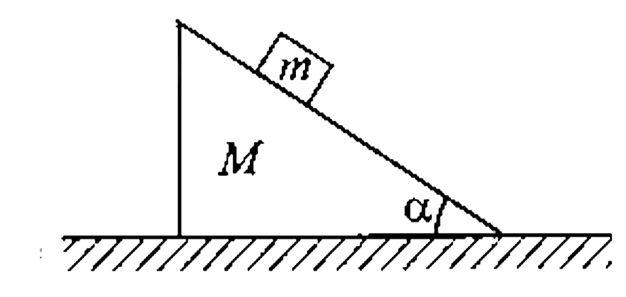
View Solution
Knowledge Check
In the system shown in fig., mA=4m, mB=3m, and mc=8m. Friction is absent everywhere. String is inextensible and light. If the system is released from rest, then

Acceleration of Block B isA20ms−2B5ms−2C15ms−2D10ms−2In the system shown in fig., mA=4m, mB=3m, and mc=8m. Friction is absent everywhere. String is inextensible and light. If the system is released from rest, then

Acceleration of Block A in horizontal direction isA5/4ms−2B21/2ms−2C11/7ms−2D27/5ms−2In the system shown in figure mB=4kg , and mA=2kg . The pulleys are massless and friction is absent everywhere. The acceleration of block A is.
 A10/3m/s2B20/3m/s2C2m/s2D4m/s2
A10/3m/s2B20/3m/s2C2m/s2D4m/s2
In the arrangement shown in the fig. all pulleys are mass less and the strings are inextensible and light. Block A has mass M.
(a) If the system stays at rest after it is released, find the mass of the block B.
(b) If mass of the block B is twice the value found in part (a) of the problem, calculate the acceleration of block A.
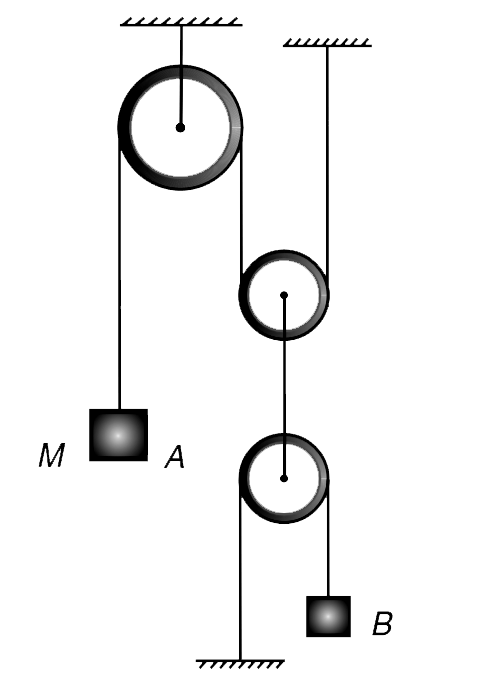
View SolutionIn the system shown in the figure all surfaces are smooth, pulley and string are massless. The string between the two pulleys and between pulley and block of mass 5 m is parallel to the incline surface of the block of mass 4 m. The system is released from rest. Find the acceleration of the block of mass 4 m . [tan37∘=34]
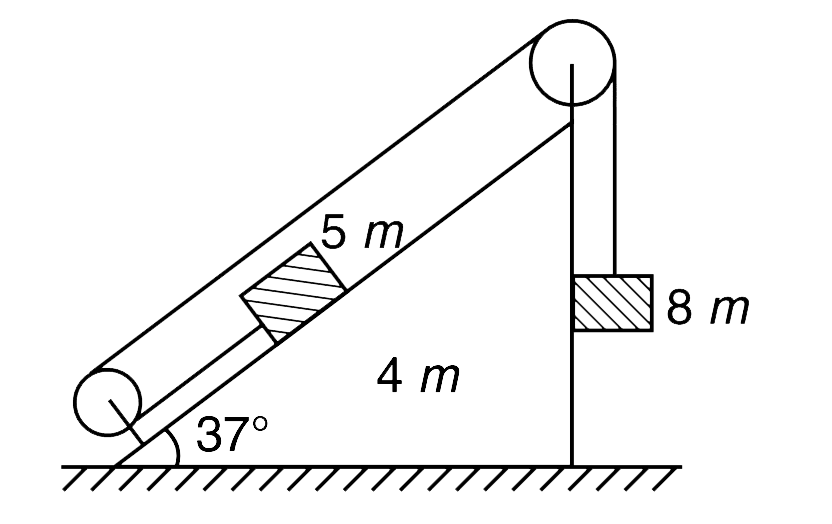
View SolutionFigure-2.64 shows a block of mass M supporting a bar of mass m through a pulley system. If system is released from rest, find the acceleration of block M and the tension in the strings
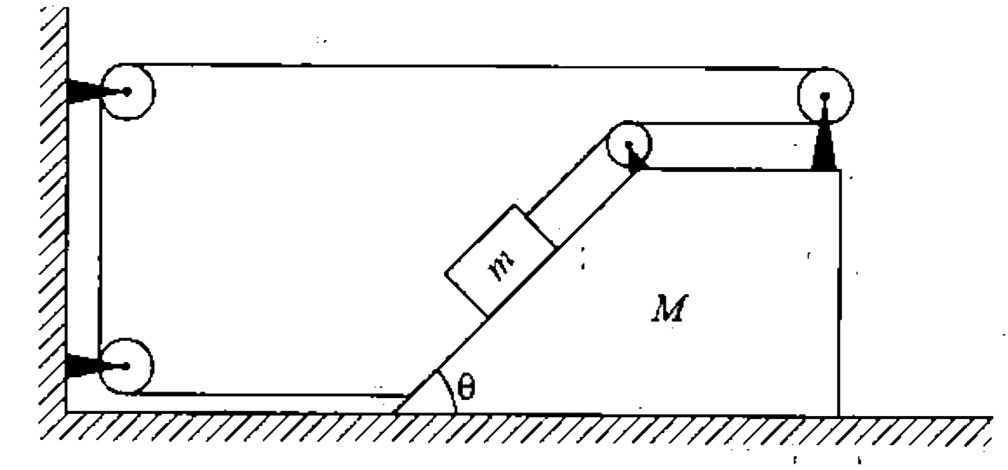
View Solution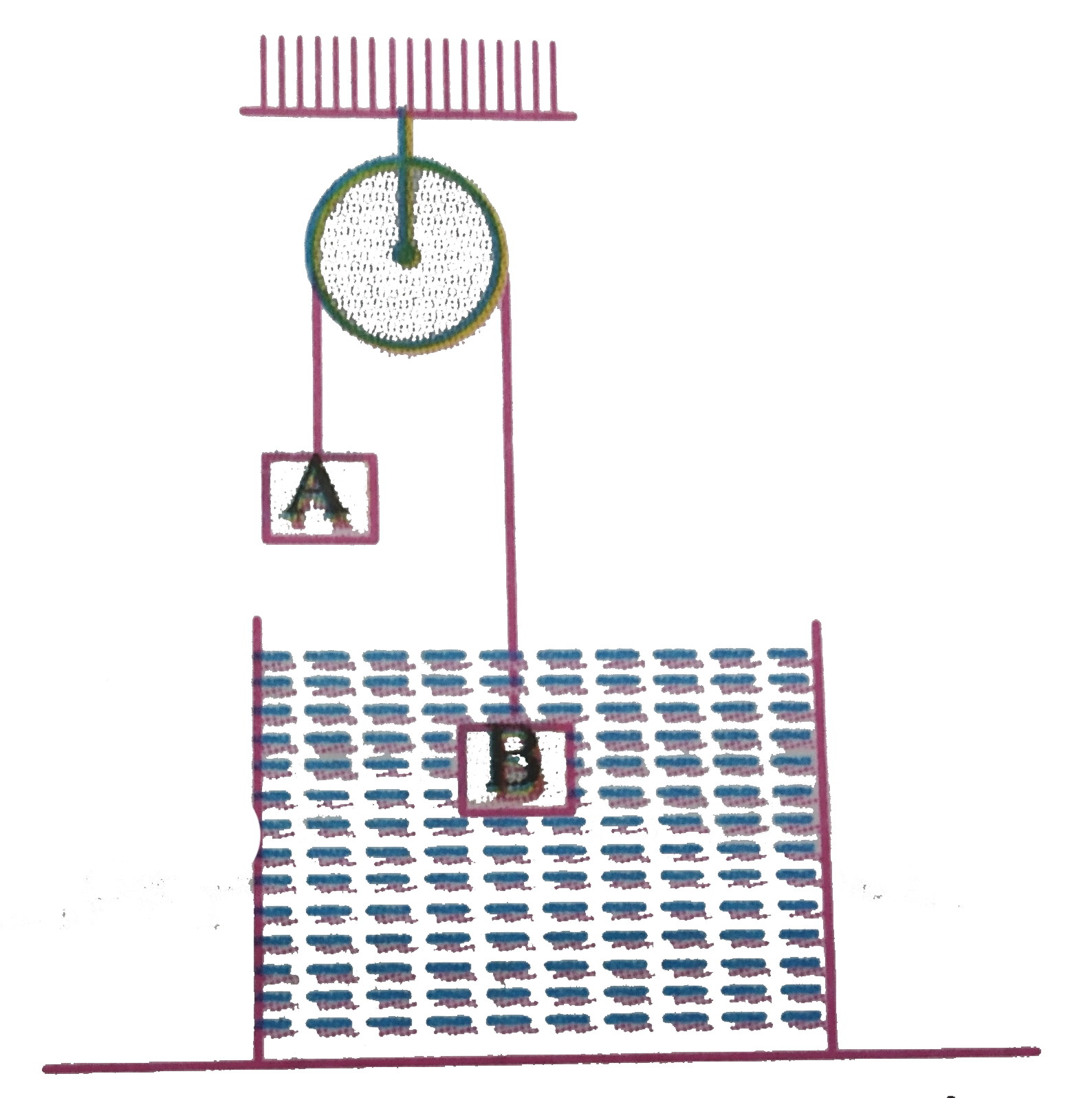
In the arrangement shown in the figure mAmB=23 and the ratio of density of block B and the liquid is 2:1 The system is released from rest. Then
View SolutionIn the system shown in fig. m1>m2 . The system is held at rest by thread BC. Now thread BC is burnt. Answer the following:
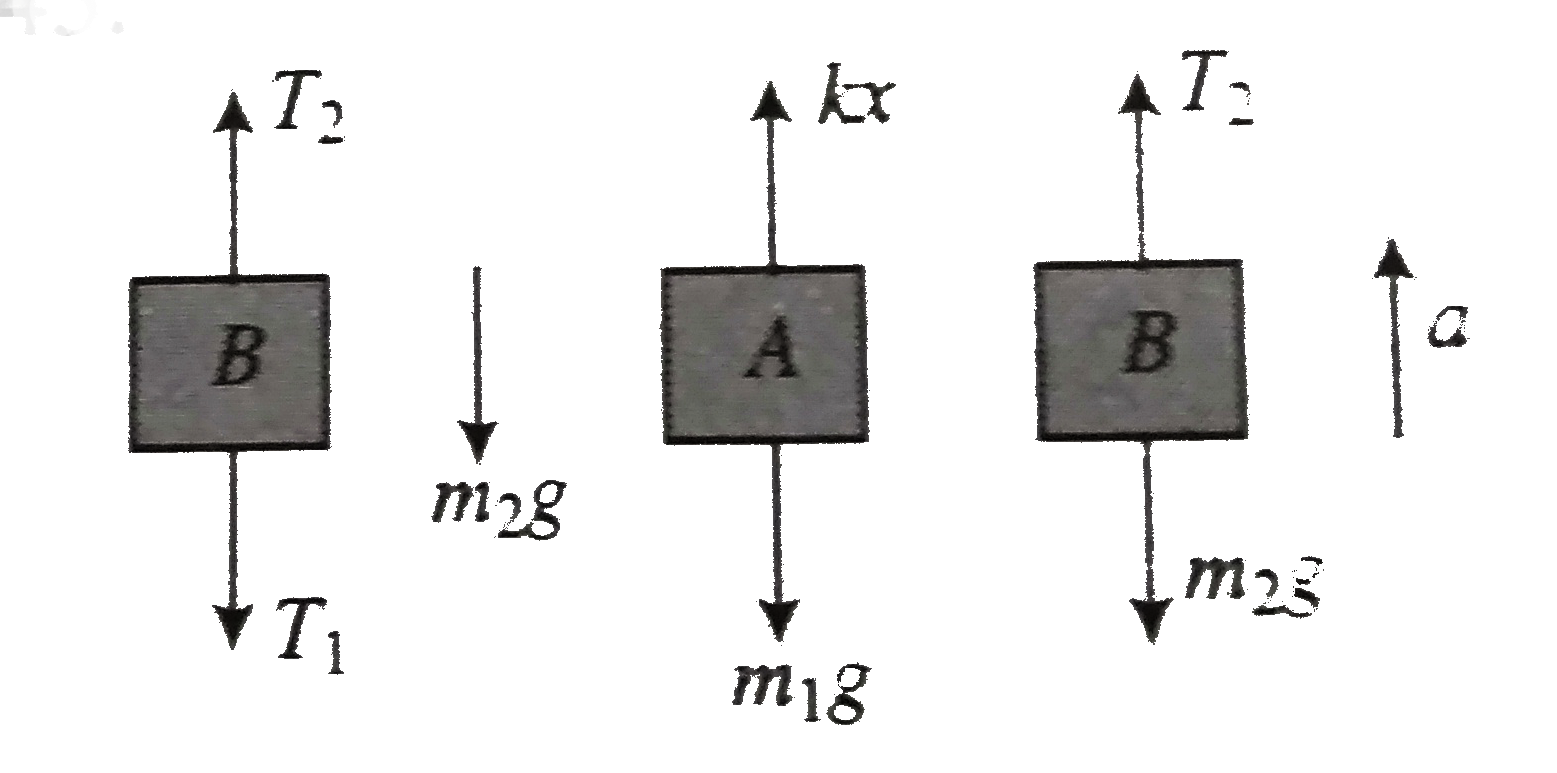
Just after burning the thread, what is the acceleration of m2?
View Solution
